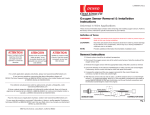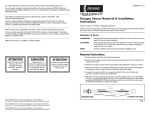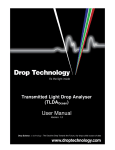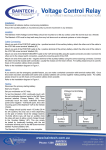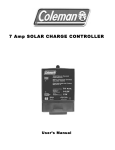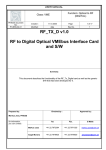Download Charging System Troubleshooting
Transcript
System Diagnosis Proper vehicle diagnosis requires a plan before you start Following a set procedure to base your troubleshooting on will help you find the root cause of a problem and prevent unnecessary repeat repairs . STEP ONE: Understand the Customer’s Concern Information collection beyond the basics. Questions asked MUST be related To the system you will be working on and the customer complaint STEP TWO: Check for Technical Service Bulletins Every vehicle that comes into the shop for a repair (not necessary for routine maintenance) should be checked for TSB’s , This can save you hours of troubleshooting. STEP THREE: Conduct a Systematic Diagnosis This step will be different for every system Follow the troubleshooting steps for the system you are working on. Make sure to check EVERY component of the system and that they are in proper working order. Document your diagnosis including tests and results. STEP FOUR: Complete and Confirm the Repair Make sure you have taken care of the customers concerns. Try to duplicate the conditions that were present when the vehicle failed Charging System Troubleshooting Chart Symptom Batteries not charging Possible Cause Corrective Action 1. Insufficient belt tension, worn belt 1. Tighten or replace 2. Defective battery(s) or battery connections 2. Check battery and battery terminal connections 3. Blown fuse or fusible link 3. Check fuse and fusible link; replace as needed 4. Check voltage drop 4. Defective wiring 5. Replace alternator 5. Faulty alternator 6. Reduce load by turning off all unnecessary accessories 6. Excessive electrical load Charging System Troubleshooting Chart Symptom Constantly overcharging (battery electrolyte is depleted in a short time) Abnormal Noise Possible Cause Corrective Action Battery Faulty battery; replace Poor contact at voltage detection point of alternator Clean contact area Faulty voltage regulator Replace alternator Insufficient belt tension Tighten or replace Faulty bearing Replace alternator Charging System Inspection Begin with a thorough visual inspection of system and components System tests: Battery Load test Alternator drive belt Belt condition Alignment Proper tension System cables & wires Make sure all connections are clean and tight Check wires for fraying, insulation damage, and other physical damage Voltage drop test Check positive side of the charging circuit. (0.2volts of less) Check negative side of the charging circuit. (0.2 volts or less) High voltage drop indicates poor connections or damaged cables Alternator Output test Start vehicle and adjust engine speed to approximately 2,000RPM Check voltage at alternator and at battery voltage should be between 13 and 15 volts Turn on vehicle loads (headlights, blower motor, defrosters) and repeat test Refer to vehicle service manual for correct specifications Voltage drop test positive side Attach your meter's positive lead to the alternator output stud and your negative lead to battery positive post. Run engine at 2,000 RPM with the lights, blower motor, and radio on, the reading on meter, should be less than .2 volts - + Battery Alternator 0.2 Voltage drop test negative side Attach your meter's negative lead on the alternator case, or ground strap if equipped, and the positive lead on the battery negative post. Run the engine at 2,000 RPM with the lights, blower motor, and radio on, the reading on your meter should be .2 volts or less. - + Battery Alternator 0.2 WWW.DENSOAFTERMARKET.COM VoltageDENSO dropTech test negative side Hotline 800-366-1123









